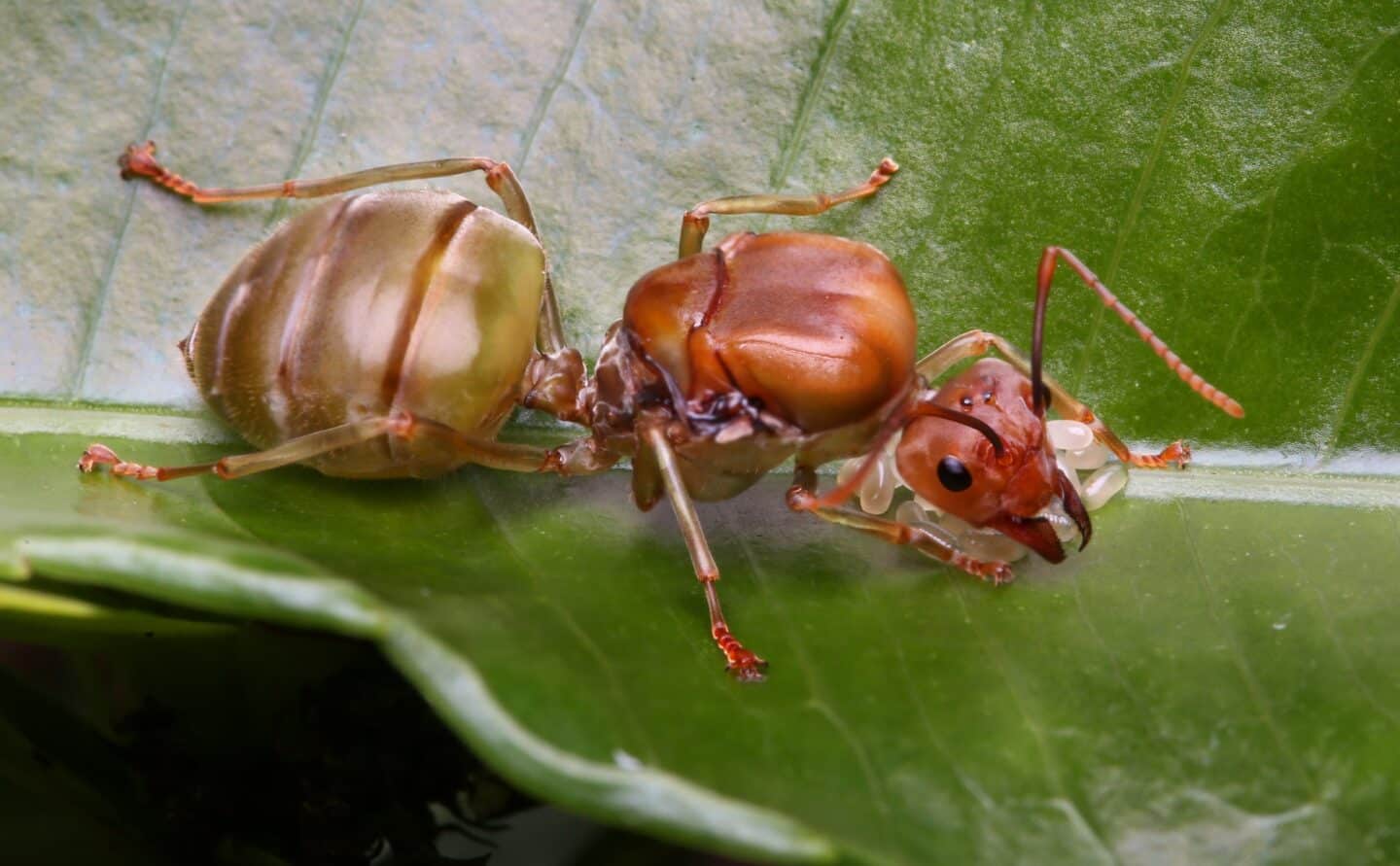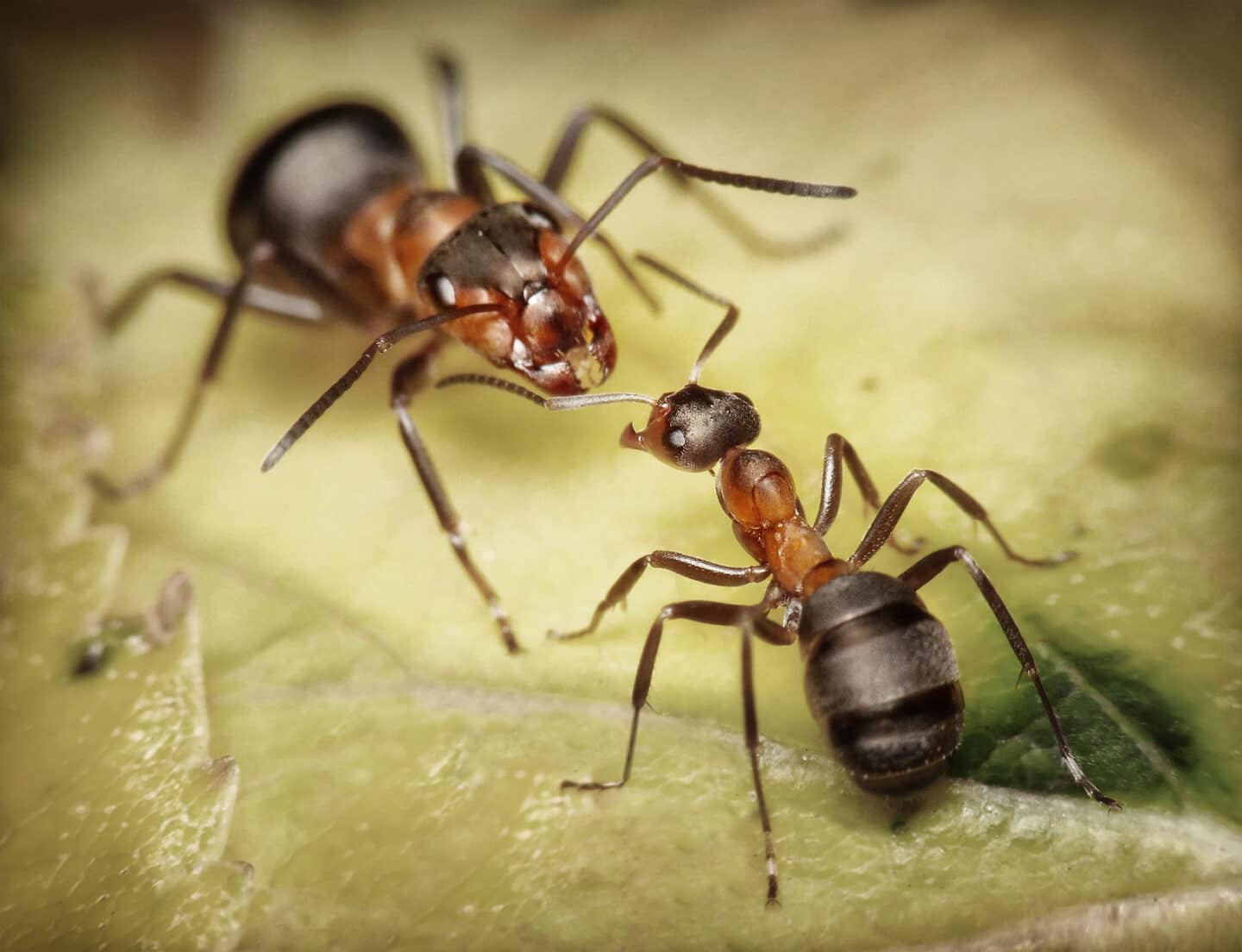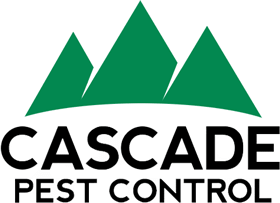Author: Kurt Treftz, Cascade Pest Control
Ants are fascinating creatures to study, even if they are always welcome in our homes. Understanding ant behavior can help us with ant control. These social insects have a role to play in their culture that dictates what they do. In this post, we explore the any colony and hierarchy of ants.
The Queen Ant

At the top of the social hierarchy of an ant colony is the queen. The colony is built around protecting the queen as she is the source of its continuation. This winged female is larger than the rest of the colony’s ants and is the only one to lay eggs. Some colonies have multiple queens (pleometrosis) while others have only one (haplometrosis).
The queen is kept deeply in the nest to provide protection. This means that an ant queen often outlives all the other ants. Queen ants can live 15+ years with some species living as long as 30 years. Some queens lay up to a thousand eggs a day.
Those eggs develop into the rest of the caste workers in the colony until the queen ne ars the end of her life (or the need for another colony arises) then one of the fertilized eggs is fed more and develops into another queen. The only job that the queen has is to mate and produce eggs for the continuation of the colony.
A queen will only mate once (during her nuptial flight) after which time she loses her wings and starts her colony. She stores the sperm in a pouch and uses it to create workers (fertilized) or drones (unfertilized) ants depending on the needs of the colony.
The Worker Ants

All fertilized eggs develop into the most populous of the ant castes: workers. These sterile females are responsible for almost everything that happens in the colony. They protect the queen and the nest, forage and store the food, nurture and feed the young, and build and repair the nest. If you see an ant, it will likely be a worker ant.
There are a few specialized roles in the colony as well. These productive insects communicate with one another in a variety of ways including pheromones (chemical trails) and body language.
Running a huge colony takes a lot of teamwork and ants are incredible at it. As ants communicate the needs of the nest, they can respond. The queen can create more workers or more soldiers or even another queen to start a new colony. Scientists have seen related ants develop supercolonies linked as a huge family. Dividing the tasks helps each to contribute to the health and resilience of the colony.
- Workers: These diligent ants are smaller than the queen and wingless. They usually live about 2 years doing all the tasks around the nest. In some ant cultures, the younger ants stay close to the queen and brood and then move outward doing other tasks until the older ants are near the nest’s exterior.
- Soldiers: One subset of the worker caste is the defensive role of a soldier. While not every species has them, these soldier ants have larger and stronger jaws necessary for protecting the colony. Usually, they make up a small percentage of the colony and don’t live as long as queens or workers. However, if there is a threat to the colony, the queen can make more soldiers as needed.
The Reproductive Ants
The last adult role in the ant colony is that of the reproductives. These ants are tasked with the single goal of making more ants – to ensure the colony’s survival. Unfertilized eggs laid by the queen will develop into males. These drone ants have wings and along with any new queens that develop will fly off in a nuptial flight to create a new colony. These winged ants are called alates.
- Males: These small ants are winged and have the simple job of finding and mating with the queen. Once they have mated, they will die within a short time of mating. Their life is short (sometimes only a week) but they have a vital role to play in the continuation of a colony.
- Virgin Queen: New queens are born when a new colony needs to be developed or when an old queen is reaching the end of her life. This winged ant will leave the nest to mate with male drones. She will only mate that one time and store the sperm to be used throughout her lifetime. She will lose her wings after mating and begin her new role (or even start a new colony).
The Brood Ants
Another group in the society of the colony is the brood. Before adult ants take their role in the colony, they develop through four stages: egg, larvae, pupae, and adult. During the different stages, the ants are growing and preparing for their roles. Eggs are laid either as fertilized (and will become a sterile female worker) or unfertilized (and will become a male drone). After the eggs are laid, they hatch into larvae.
This stage requires constant feeding from the workers who care for and protect these developing ants. This is also the stage when a larva can be fed more and develop into another queen capable of creating her own colony. After the larval stage, the ant moves into the pupal stage. During this time the ant is undergoing drastic change as they become adults. Some ants create cocoons while others are “naked”.
The ants in this stage don’t need to be fed but they do need to be protected. Again the care falls to the worker ants. Finally, they emerge as adults and find their place in the colony’s social structure. Usually, the younger worker ants work closer to the queen and the brood and then move outward to the edges of the colony as they age.
